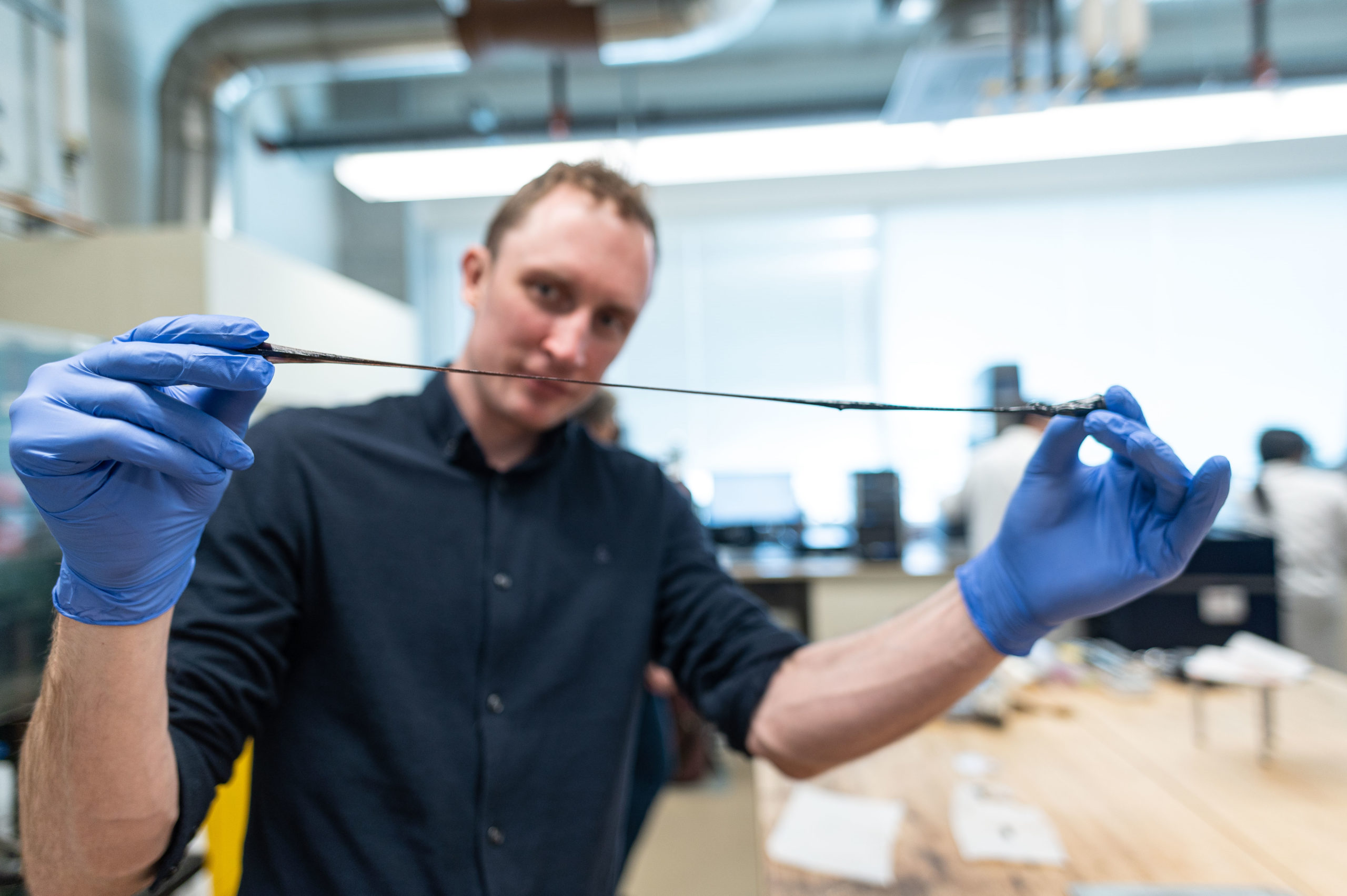New ideas include compostable bioplastics and innovative coating that extends product lifespan.
The end of plastic pollution—in the oceans, on land and in our air—could be within reach with two UBC ventures working hard on solutions that could make this vision a reality.
“Tonnes of plastic waste pollute our land and oceans,” says Dr. Jordan MacKenzie, co-founder and CEO of Bioform Technologies, a UBC start-up that is working on bringing a completely compostable bioplastic to the market.
“We use the world’s most regenerative materials to create products that sustainably eliminate plastic waste without the green premium.”
‘Plastic’ from kelp and wood fibre
Bioform turns kelp and wood fibre—both plentiful in B.C.—into thin but durable bioplastic films that can be directly used for applications like agricultural mulch film, used to regulate soil moisture and protect crops, or rigid packaging products such as beverage lids and takeout containers.
“Most plastic mulch is made from polyethylene (PE) because it’s cheap and durable, but PE can stay in the soil for decades and cause significant environmental contamination,” says Dr. MacKenzie. “As well, food packaging waste is a long-standing problem—tonnes of beverage lids end up in the landfill because they’re almost impossible to recycle.”
MacKenzie holds a PhD in fluid mechanics and developed the technology during his time as a research associate and then research associate at UBC’s department of chemical and biological engineering with professor Dr. Mark Martinez, co-founder of Bioform.
The technology—originally inspired by the spinning of dragline silk, the strong, stiff strands that form spider webs— bridges natural processes and papermaking to produce rolls of film that can be pressed into a desired shape without heat, reducing the environmental footprint and cost of manufacturing. “Our technology is quite flexible and we are currently developing biodegradable bioplastic tubing for use in the hospital setting,” notes Dr. Martinez.
Unlike other biodegradable plastics that require special conditions to break down, Bioform’s bioplastic decomposes quickly under normal household conditions, which MacKenzie demonstrates by throwing in a couple of takeout containers in the organic bin outside his office. Six weeks later, worms in the soil have broken down the containers into a handful of scraps.
Bioform was recently named among the 50 most investable clean tech ventures and is aiming to go commercial scale next year. It plans to move out of its facility at UBC’s HATCH Venture Builder into bigger premises in the Lower Mainland.
“It’s exciting to see how far we can take this technology to create new products that do not harm the environment,” says Dr. MacKenzie. “We’re now at a stage where we can compete in cost and performance against some of the most common plastics.”
Self-healing polymer

Where Bioform looks to eliminate nonrecyclable plastics, another UBC venture, A2O Advanced Materials Inc., offers a different approach to promoting sustainability through a new class of materials that make products that work longer and more efficiently.
The A2O team is testing a class of novel polymers that when added to other products like marine paints and industrial coatings can make them self-healing and weather-resistant, increasing their lifespan.
What makes the polymer unique is it has been enhanced using an innovative, patented process so that it can rebuild itself when it is torn and scratched—which the team demonstrates by snapping a piece in half and then watching it reform into a single intact piece.
“You could almost call these materials alive. They have the ability to respond to stimuli and are self-healing,” says A2O co-founder Dr. Damon Gilmour.
“We’re looking to deploy those materials in global industries such as shipping, energy and textiles where the ability of the materials to self-heal or respond to external stressors means the product can last longer and work more efficiently.”
For example, self-healing materials have drawn increasing attention from battery manufacturers looking to extend the lifespan of phones, energy storage devices and similar products. This will also help save precious metals that are required in their manufacture.
“These unique materials possess a plethora of remarkable properties such as reversibility, flexibility, self-healing, adhesion, biocompatibility, thermal stability, anticorrosion and antimicrobial activity all at once, a combination that cannot be found in another class of polymeric materials,” notes A2O co-founder, chemical and biological engineering professor Dr. Savvas Hatzikiriakos.
A2O is currently scaling the technology through pilot projects designed to address some of the biggest environmental problems in industry, including biofouling, corrosion and textile waste. Says co-founder and UBC chemistry professor Dr. Laurel Schafer: “It is exciting to see world-leading green chemistry technology developed here at UBC result in new materials with remarkable and transformative properties. The potential applications are very diverse and present inspiring sustainability research challenges for the team.”
Both Bioform and A2O received support from entrepreneurship@UBC, which brings entrepreneurial thinking and leadership skills to help promising UBC start-ups unlock their potential.
“Since its inception in 2013, entrepreneurship@UBC has mobilized UBC innovation, helping to translate the university’s leading-edge research into tangible impact through the creation of ventures,” notes Dr. Sean Lumb, interim managing director with e@UBC. “It’s exciting to see transformative ventures such as A2O and Bioform now bringing their solutions to market and solving some of the world’s most pressing issues.”
